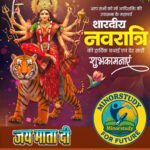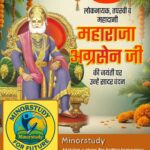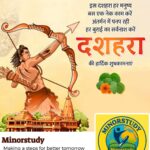Harshacharitam: History, Significance, and Lasting Legacy
Introduction
Harshacharitam (The Deeds of Harsha), penned by the eminent Sanskrit scholar Banabhatta in the 7th century CE, is more than a biography of King Harshavardhana—it’s a dazzling mirror to ancient India’s socio-political life, culture, values, and intellectual legacy. This literary masterpiece doesn’t just recount the glorious reign of Harsha; it captures the human emotions, philosophical thoughts, and historic grandeur of an era long gone.
- Introduction
- History of Harshacharitam
- Timeline
- Key Facts about Harshacharitam
- FAQs
- 1. Who wrote Harshacharitam?
- 2. Is Harshacharitam historically accurate?
- 3. What does Harshacharitam tell us about India?
- 4. Is Harshacharitam still relevant today?
- 5. How can modern readers connect with this text?
- Literary and Cultural Significance
- Daily Life Impact
- Observance and Academic Reverence
- Wishing and Reflection
- Summary of Important Points
- Conclusion: Why Harshacharitam Still Matters
In this article, we explore the history, facts, timeline, FAQs, significance, daily life impact, and cultural importance of Harshacharitam, written in an engaging, human-friendly tone spanning over 1200 words.
History of Harshacharitam
Harshacharitam was authored by Banabhatta, the court poet of King Harshavardhana (c. 606–647 CE). Born in a Brahmin family, Bana had a flair for eloquence, imagination, and classical Sanskrit style. Harsha, after uniting northern India post the fall of the Gupta Empire, invited Bana to his court in Kannauj.
Written in the campu style (mixing prose and poetry), Harshacharitam combines biography, autobiography, and history. While it glorifies Harsha’s rule, it also offers valuable insights into the governance, society, and life of 7th-century India.
Timeline
- 606 CE: Harshavardhana becomes king of Thanesar.
- 607–647 CE: Reign of Harsha; northern India sees cultural and political consolidation.
- Circa 620–630 CE: Banabhatta joins Harsha’s court.
- Circa 630 CE: Harshacharitam is composed.
- Modern era: Rediscovered and studied by historians and Indologists for its blend of history and literature.
Key Facts about Harshacharitam
- Author: Banabhatta
- Language: Sanskrit
- Genre: Historical biography written in campu style
- Subject: Life of Harshavardhana, King of northern India
- Content: Political conquests, personal traits, court life, family history, and socio-cultural descriptions
- Style: Mix of florid prose, poetic flourishes, similes, and rhetorical grandeur
- Complementary Work: Kadambari (a romantic novel by Banabhatta)
FAQs
1. Who wrote Harshacharitam?
Banabhatta, the court poet of King Harshavardhana, wrote it in Sanskrit.
2. Is Harshacharitam historically accurate?
It blends facts with poetic exaggeration. While it glorifies Harsha, it remains a valuable historical source.
3. What does Harshacharitam tell us about India?
It reveals insights into royal life, religious practices, city planning, societal norms, and the cultural landscape of early medieval India.
4. Is Harshacharitam still relevant today?
Yes. It reflects leadership values, cultural pride, and the power of storytelling in preserving history.
5. How can modern readers connect with this text?
Through translations, literary studies, and historical documentaries.
Literary and Cultural Significance
Literary Beauty
Harshacharitam stands as a hallmark of Sanskrit biography. Its vivid metaphors, dense imagery, and rhythmic prose make it a delight for literary lovers. Bana uses alliteration, similes, and grandiloquent style to elevate even mundane descriptions.
Societal Insight
- Describes caste system, education, rituals, and urban vs rural life.
- Showcases royal generosity, justice, and welfare policies.
- Provides glimpses into the lives of students, merchants, ascetics, and artists.
Cultural Resonance
- Reflects the values of Dharma, loyalty, devotion, and knowledge.
- Emphasizes the importance of guru-shishya tradition.
- Reaffirms the power of unity and vision in governance.
Daily Life Impact
1. Leadership and Vision
Harsha’s decisions, compassion, and strategic alliances teach modern readers about inclusive governance and ethical leadership.
2. Education and Learning
Banabhatta’s early life reflects the value of classical education, mentorship, and literary discipline—core principles still relevant today.
3. Cultural Pride
By reading Harshacharitam, we reclaim the forgotten glory of India’s intellectual and moral traditions.
4. Appreciation of Storytelling
In an age of fast media, Bana’s patient, detailed storytelling reminds us of the art of narration and the depth of observation.
Observance and Academic Reverence
While there isn’t a festival dedicated solely to Harshacharitam, it finds space in:
- Sanskrit literature conferences
- University curricula (especially in courses on Indian classical literature and historiography)
- Documentary films and cultural panels
- Literary festivals focusing on ancient Indian texts
Scholars celebrate its literary depth, while students admire its window into ancient life.
Wishing and Reflection
“May the eloquence of Banabhatta and the noble reign of Harsha inspire you to lead with wisdom, live with integrity, and learn with humility. May you find pride in the roots of our civilization and courage to uphold truth, like the kings and poets of yore.”
Summary of Important Points
- Written by: Banabhatta
- Time: 7th century CE
- Language: Sanskrit
- Genre: Campu Kavya (prose-poetry mix)
- Themes: Royalty, governance, culture, learning, duty
- Modern Relevance: Leadership, cultural awareness, historical learning
- Study Use: Sanskrit literature, Indian history, leadership education
Conclusion: Why Harshacharitam Still Matters
In a fast-paced world driven by technology and fleeting trends, Harshacharitam offers us a moment to pause and appreciate the enduring spirit of Indian civilization. Through Banabhatta’s words, we don’t just meet a king—we meet a culture, a society, and an ideal worth striving for.
It’s a literary bridge from the past that leads to a better understanding of our identity, values, and potential. In classrooms, discussions, and personal reflection, this text continues to illuminate the mind and enrich the soul.
Let us not let the brilliance of Harsha or Banabhatta fade into academic obscurity. Let their voices echo through our conversations, our values, and our dreams.
Next Step for You:
- Read an excerpt from Harshacharitam in translation.
- Discuss a historical character with a child or student.
- Reflect on the qualities of leadership you admire today—and compare them with Harsha’s.
“History is not just in books—it is in how we think, act, and remember.”








